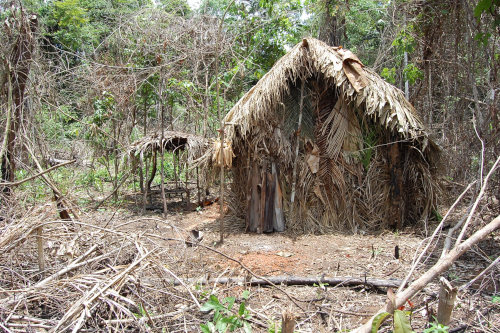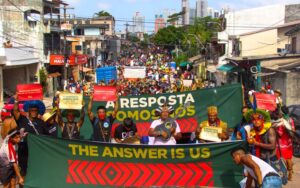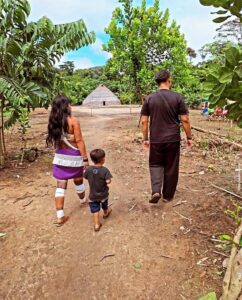The order includes the demarcation of the Tanaru (MT), Piripkura and Kawahiva do Rio Pardo (MT) indigenous lands.
Supreme Court (STF) Judge Edson Fachin issued a new ruling as part of Claim of Non Compliance with Fundamental Precept (ADPF) 991, which deals with the protection of the rights and territories of isolated indigenous peoples. In response to protests from the Brazilian state, which is a defendant in the case, Fachin gave a deadline of 30 days for the ‘final’ fulfilment of a series of measures that had already been ordered in the first ruling in the case, in November 2023. The lawsuit was filed by APIB (Articulation of Indigenous Peoples of Brazil), with support from Opi (Observatory for the Human Rights of Isolated and Recently Contacted Indigenous Peoples).
The order gives FUNAI (National Foundation for Indigenous Peoples) one month to present an action plan for the regularisation and protection of indigenous lands with the presence of isolated and recently contacted indigenous peoples, which must include a timetable for identifying and delimiting the Piripkura (MT), Tanaru (RO) and Kawahiva do Rio Pardo (MT) indigenous lands. Fachin also ordered FUNAI to establish a timetable for surveillance, inspection and protection operations, with the aim of guaranteeing the integrity of indigenous lands and curbing invasions.
The STF ordered the Federal Government to ensure that the necessary resources are available to carry out these actions including the provision of financial resources for FUNAI, if necessary, both for the demarcation of the territories and for specific items for physical restructuring, opening new protection units and hiring staff to work in the Ethno-Environmental Protection Fronts (FPEs) and Ethno-Environmental Protection Bases (Bapes).
Finally, in the new decision, the STF asks for proof that ordinances to restrict use have been issued for all references to isolated indigenous peoples who are outside or partially outside indigenous lands, as well as the protection plans for these areas.
FUNAI sent the STF information about the actions taken to comply with the ADPF 991 orders, including a Plan for Restructuring the System for Protecting Isolated and Recently Contacted Indigenous Peoples. Fachin considered that the plan is an ‘important instrument’ on the way to full implementation of the measures ordered, but ‘does not currently present conditions that prove compliance with the Supreme Court's decision.
The STF emphasises that ‘less than 10% of the actions carried out deal with specific territorial protection activities and the location of isolated indigenous people’. The judge considers that even though measures have been taken and planning has been carried out as requested by the STF to ensure the rights of indigenous peoples in isolation, there has been serious dismantling of the System for the Protection of Isolated and Recently Contacted Indigenous Peoples’ including budgetary limits, lack of personnel and even a lack of regulation of norms. For these reasons, says Fachin, most of the state's efforts are concentrated on maintaining structures and routine actions, ‘preventing the Ethno-Environmental Protection Fronts (FPEs) from advancing the policy of protecting and locating isolated indigenous people.
ADPF 991 also ordered the National Council of Justice (CNJ) to include 10 court cases relating to enforcement of the rights of isolated indigenous peoples in a specific working group within the scope of the National Observatory on Environmental, Economic and Social Issues of High Complexity and Great Impact and Repercussion, for continuous monitoring. The CNJ complied with the order, to guarantee a reasonable timescale for these proceedings.
Opi considers ADPF 991 to be a milestone in the defence of rights of indigenous groups in isolation and also a continuation of the work of the Observatory for the Human-Rights of Isolated and Recently Contacted Indigenous Peoples’ (Opi) founder, indigenist Bruno Pereira, who was murdered in June 2022 in the Javari Valley.
Isolated indigenous peoples are those who do not maintain close or regular contact with people outside their communities. They generally choose to live apart from surrounding society because they have suffered persecution and massacres during the process of occupation and colonisation in the Amazon region. Recently contacted peoples are those who maintain occasional, intermittent or permanent contact with segments of Brazilian society but retain significant socio-cultural autonomy. Historically, these peoples have suffered genocide and ethnocide and are vulnerable to outside pressures that can jeopardise their very existence.
* Man of the hole, or Tanaru, were the names given to an isolated indigenous man who lived by the Tanaru river.




